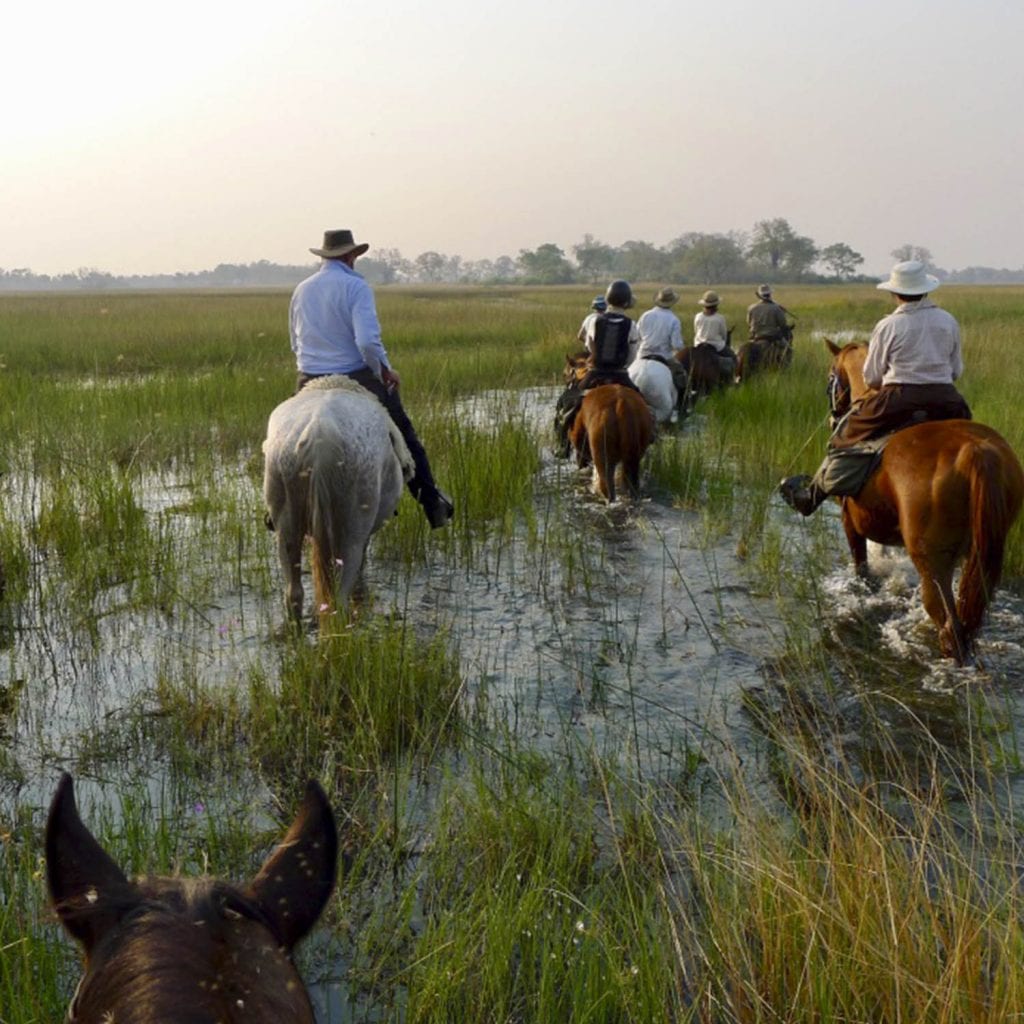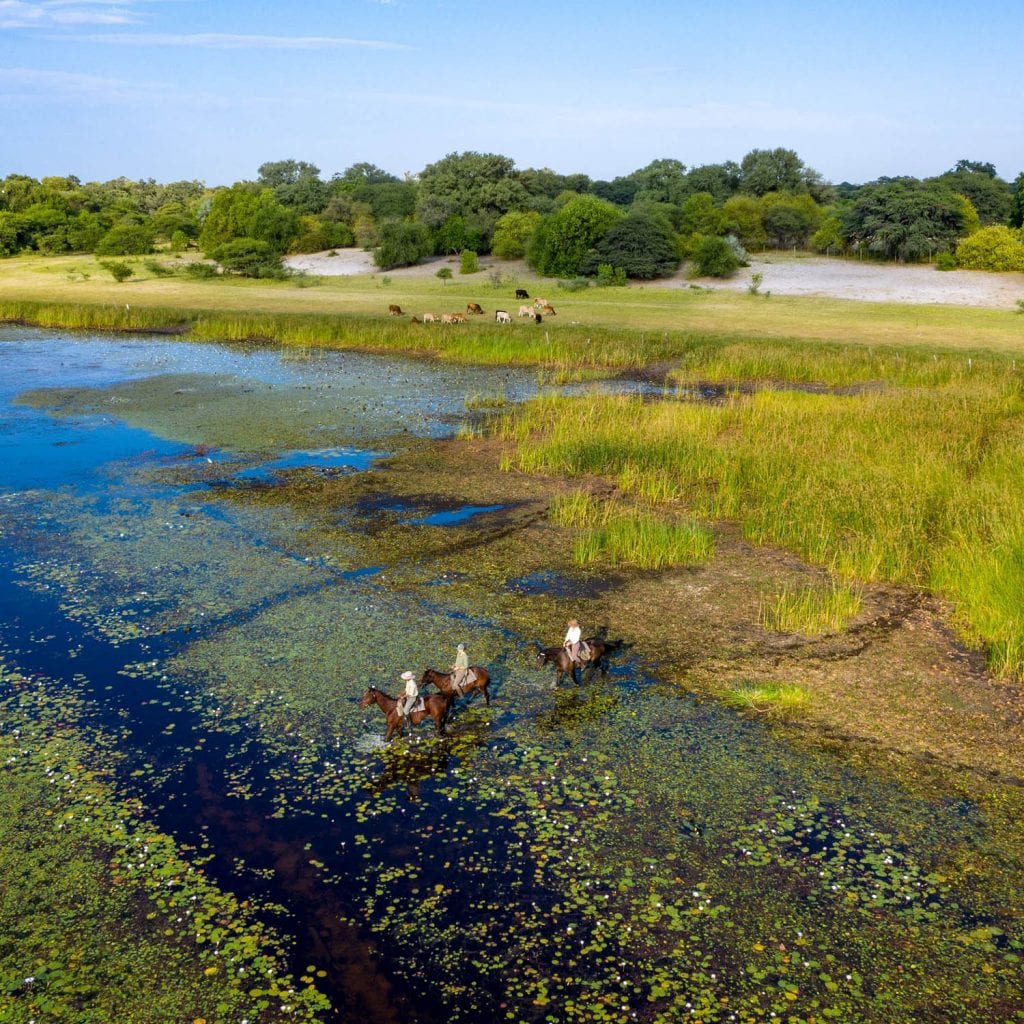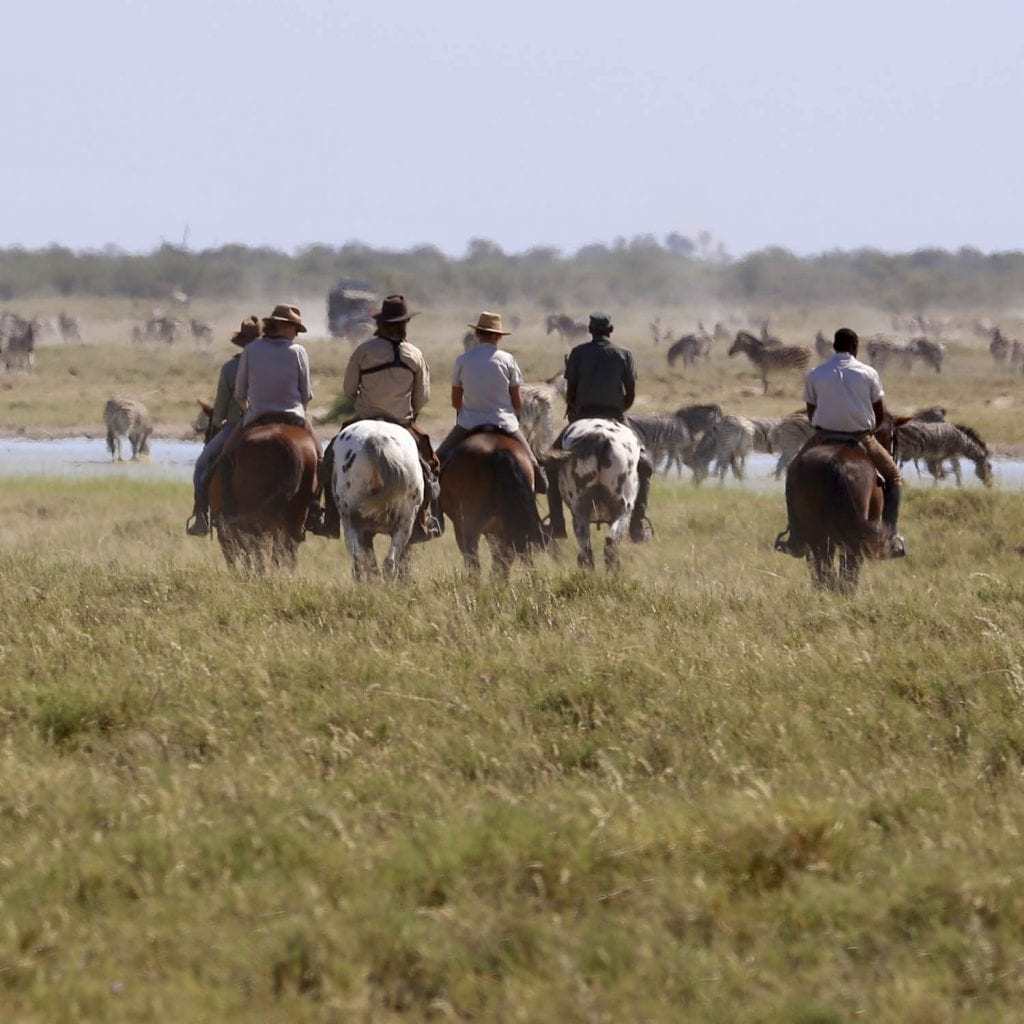Why go on a horseback safari in Botswana?
Matias Carrillat
22 July 2020
No Comments
Why choosing Botswana to go on a horseback safari?
Unlike the popular Kenya, Tanzania and Zambia, Botswana embodies an extravagant destination to go on a safari or horseback riding experience. We can divide this country into three main areas, ranging from the most humid and most peaceful corners, passing through more arid and wild areas where nature comes into action, up to the desert salt flats and sandy grounds that make us rethink the concept of “empty”. A brief description of its greater attractions is enough to understand that Botswana has some of the most beautiful landscapes in Africa. But not a conventional beauty, an enigmatic one.


Horseback safari in Botswana: Landscape and geography.
For those who are nature fanatics, the Okavango Delta represents an essential goal. This incredible natural phenomenon is the result of a sudden tectonic change that 50,000 years ago interrupted the flow of the Okavango River towards the ocean and gave rise to a myriad of alluvial plains, canals and palm-strewn islands. Navigating here will make you feel in a time capsule since we will drive through humid and unspoilt places that have not undergone changes for thousands of years, but which, paradoxically, were once deserts. Its waters rise and go down at whim, and the weather is so fickle that it is us who must adapt to the conditions of nature. Depending on the mood of the environment, we can explore this wetland on a horseback ride, on foot or in mokoro. Be that as it may, the Delta assures us a calm and natural experience, fully focused on the senses.
Around this wild oasis, we find the Kalahari Desert: an area of vast open plains, salt flats and old and dried river beds. Within this basin, we find one of the biggest salt flats in the world: the Makgadikgadi Pan. This is a plain area of 12,000 square kilometres with a whitish aspect and bright horizon that seems to be extending into the infinite. This land is the ideal place to freely gallop across its endless plain routes without a clear way, adrift, without knowing what happens around us. This represents a great example of what it means to be isolated.
Finally, the Tuli reserve is comprised of a set of private farms deployed in large hectares where green settings prevail, formed by forests of mopane, swamps and river jungles. Conversely, the sandstone cliffs that follow seem to form a lunar landscape with brown and orange shades. A part of this block corresponds to the Mashatu game reserve, a wildlife conservation area that protects the biodiversity of fauna and flora in this region. Crossing this place will allow us to experience first-hand what we call “The Game”: it is almost certain that we will have the opportunity to see animals from a very close range, watch them as they search for food, and coexist with them for a little while.


Horseback safari in Botswana: flora and fauna
If we talk about flora, we should first start talking about the Okavango Delta. This wetland has lush vegetation, including the beautiful water lilies that unfold like pictures on the surface of the water. Beyond, in the Tuli reserve, we will cover a wilder and more dynamic land, if we compare it to the serenity of the Delta. We will get across forests of mopanes and acacias surrounded by extensive meadows where we can speed up the gallop and head towards the horizon. Then, on the borders of these plains, forests from those ancient and towering trees called “baobabs” rise.
As for the Kalahari reserve, this is home to two ecosystems, a desert one and a marshy one. Going around these areas on a horse means embarking on a safari that will make us stop every step of the way to contemplate the wonders surrounding us, savour its radiant range of colours, smell the arid nature, and listen to the cautious steps of the fauna that can feel we are close.
When looking for animals, the Okavango Delta gathers a great number of species in its dry and humid habitats. Some of the Big Five we find there possess unique distinctive features. Here, white and black rhinos, hippos, and elephants wander along these plains, which will enable us to get very close to them. Still, the great phenomenon that happens only here is that, given that water levels are unpredictable, lions have learnt how to swim in order to survive. We will also see giraffes prowling the surroundings, lechwe splashing us from the water and kudus appearing from the brushwood. We will also have the chance to spot herds of buffalo, zebras, wild boars and some African wild dogs -a currently endangered species-, from a very close distance. In turn, as far as the Tuli reserve is concerned, we will enter the home of pachyderms par excellence. It comes as no surprise that this place is commonly called the “land of giants”.
The Kalahari reserve is also, for our surprise, an oasis for the fauna. Arid landscapes not necessarily mean sterile grounds. It is true that, for the most part of the year, this area remains desolated and extremely dried due to the lack of rains. However, in the damp season, the islands and grasslands that sprout around it are endowed with zebras, wildebeest, hares, ostriches, and the predators that stalk them. Besides, it is a place where you can eventually sight the surreal black mane lions. In addition, among its desolated salt flats, we find thousands of flamingos that colour the pale desert. To learn more about the Kalahari adventure, click here.
Also, the salt deserts give us a unique and wonderful scenario: meerkats running free through the golden grasslands in search of scorpions or some other prey. The fascinating thing about these creatures is that, although they are wild by nature, they have get accustomed to the human presence and, thus, they easily sympathize with whoever approaches them: it is not uncommon for them to climb on our shoulders.


Horseback safari in Botswana: Culture and history
Crossing the Okavango Delta on mokoros is a traditional and legendary experience we can live in a tour through Botswana. Mokoros are classic vessels with which, centuries ago, the Bayei people used to navigate the rivers for hunting and fishing purposes. They are handcrafted constructions made of Ebony or Kigelia wood, of small size, with enough space for two passengers sitting and a driver standing behind them. This type of slim canoe makes it possible to navigate shallow waters as it is driven with a long pole that is touching the bottom of the river to propel the boat -something like the African version of the Venetian Gondolas. The big difference among these vessels is that the mokoros will take us to more remote and natural adventures, in an environment in which the human race tends to be the foreign element. The mokoro allows us to go on paused, meticulous, silent boat rides, replacing our voices with the voice of nature: the movement of the waters, the friction of the wood with the delta, and the sounds of the fauna that, in the distance, impose its presence.
As for its inhabitants, we will find a unique nomadic people in the Kalahari Desert. Mostly known as Bushmen, they are famous for their physiognomy and the characteristic “clack” in their language. Women are gatherers and men are hunters. In its own language, Kalahari means “silence and solitude in freedom”. Therefore, coming across these people completes the spiritual and exciting experience of walking through this diaphanous open space.
Other community with which we will try to make contact with is the Zu/Hoasi people, an ancient native nation that has survived for centuries in a hostile and wild environment thanks to their knowledge regarding the surroundings and their surviving skills. From its history, we will learn not only about the richness of plants and animal behavior, but also about that vital instinct that keeps us alive as a species despite everything. If you are interested in cultural contact with local people, you cannot miss The Mara.


Africa has something different that makes all its phenomena be surrounded by a veil of mystery. But it goes beyond its phenomena, every moment in these lands inspire us more than any other land in the world. A sunset sailing through the waters of the delta, a ride in the solitude of a discoloured desert, a night walk amid the roars of nature, a humble dinner under the starry sky … When the destination is more than just a place, we comprehend that traveling is not an option but a duty.


Leave a Reply